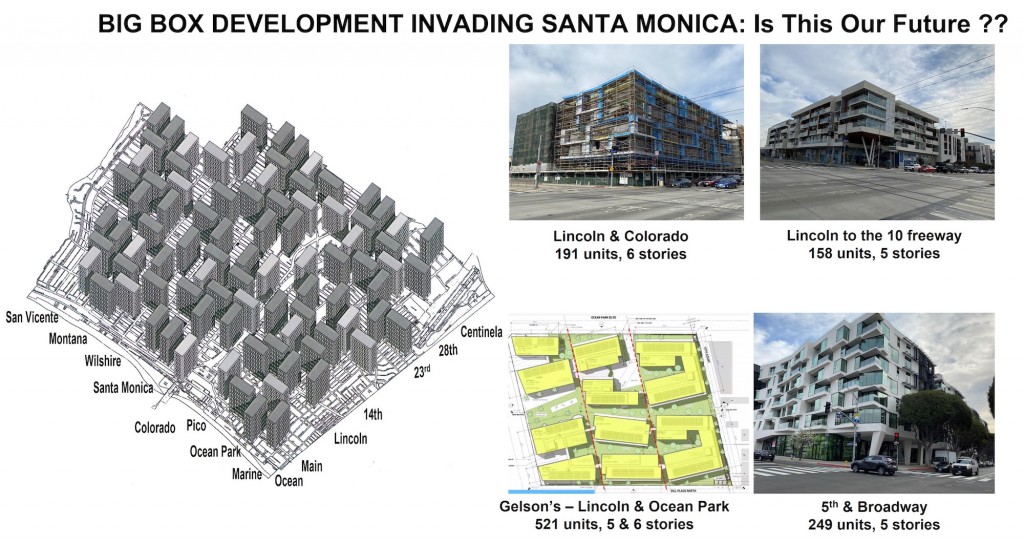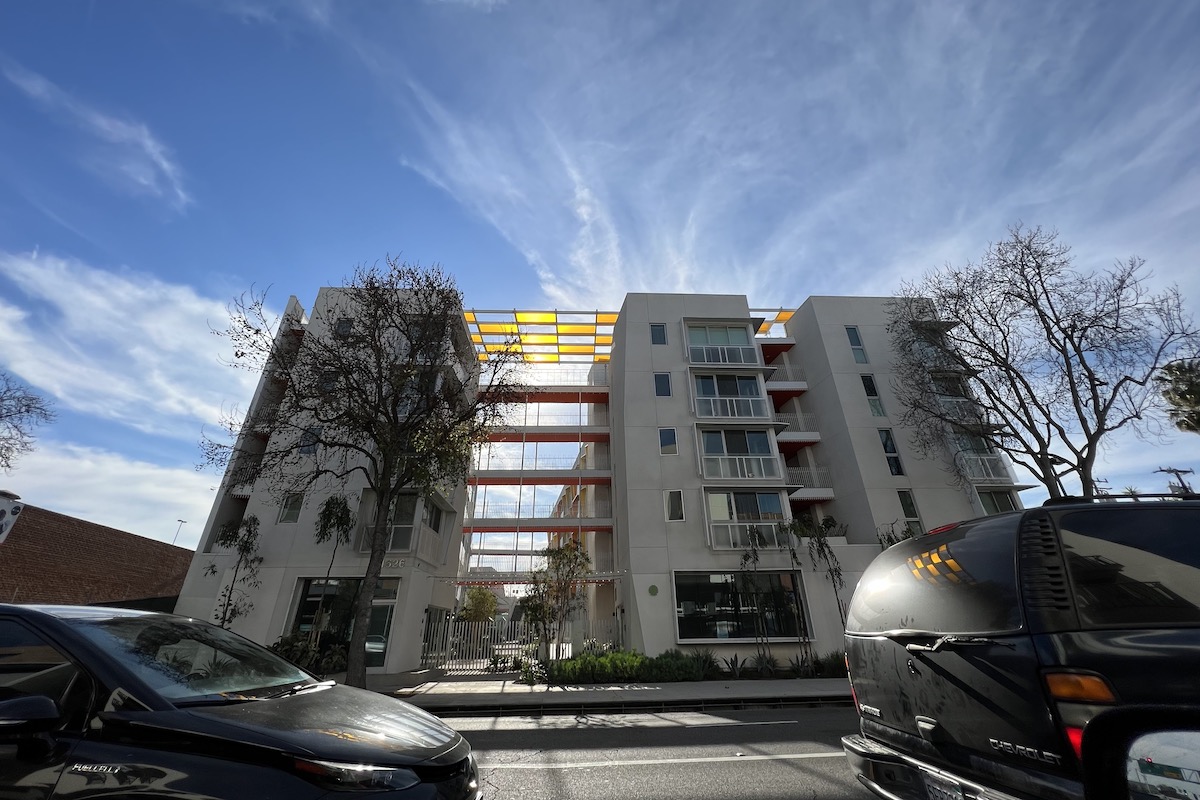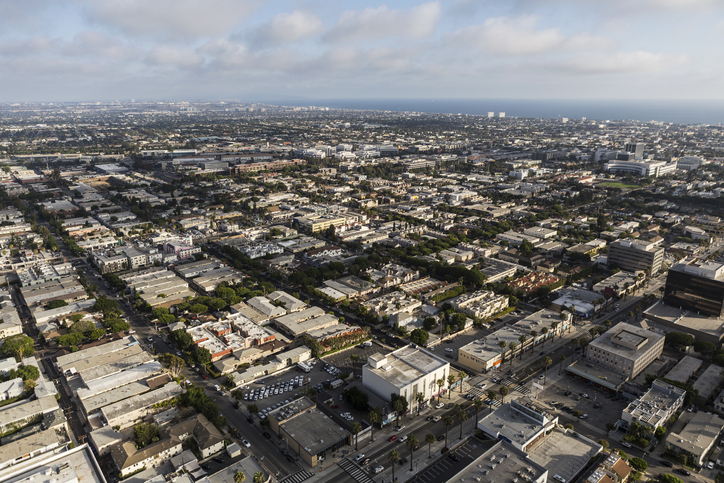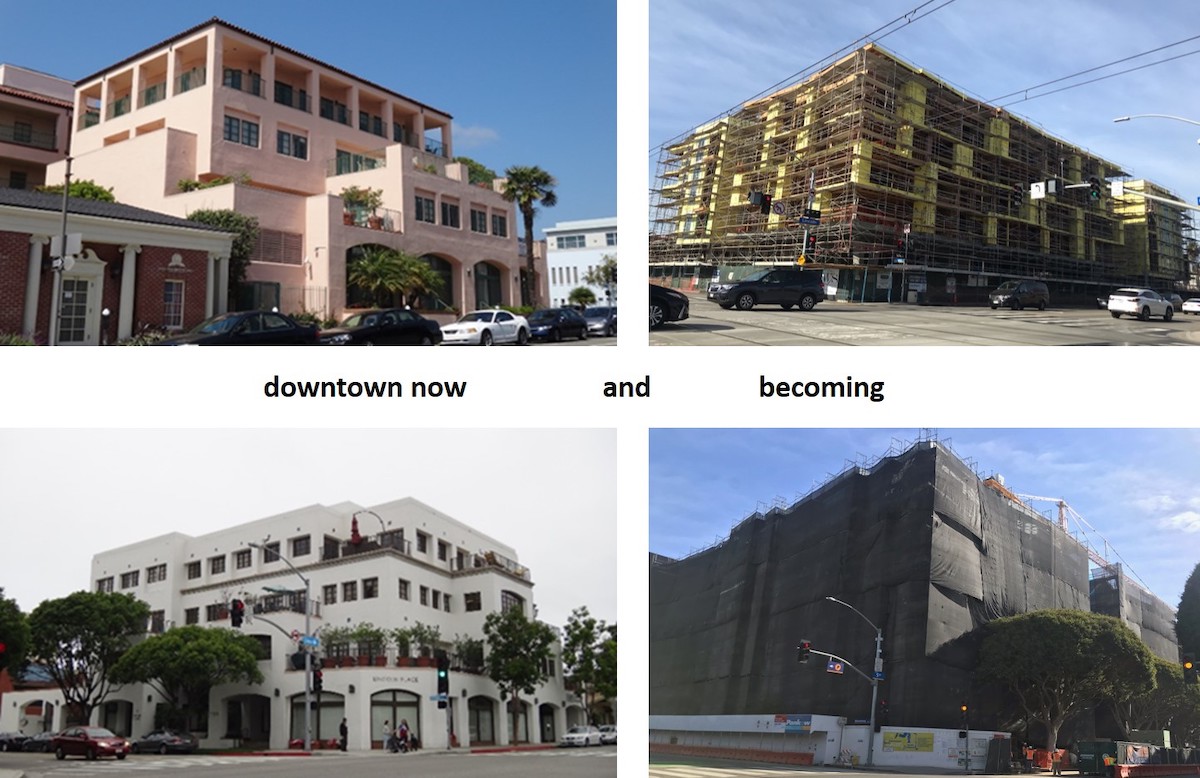
This is the 5th of five articles outlining serious issues Santa Monica residents and their city government are facing.
The 1st article addressed how the development and tourist industries come first, residents last, and the damaging effect this has on our low-rise beachfront city.
Article 2 dealt with increasing “canyonization” of our downtown and the pressing need to maintain a pedestrian friendly environment.
The 3rd article stressed the importance of our 10 boulevards and avenues that provide structure and visual fabric to our city, and how they could become parkways, providing neighborhood centers within walking distance of nearby homes.
Last week’s 4th article described how new state law will turn single-family neighborhoods into multi-family neighborhoods and how recent changes in our zoning code allows rapid change from a history of courtyard design to block-like prison cell apartments pressed against both alleys and traffic-filled boulevards!
What is our city’s destiny? Are we to become the younger sibling of downtown Los Angeles? We’re certainly headed in that direction with 8,800 state-mandated units housing 15,000-20,000 new residents in potentially 90 seven-story buildings as the aerial perspective of Santa Monica suggests. The New York developer who has planned 521 units on the Gelson’s site also has 1,193 units planned for another 12 sites in our city. Is dense 6-story BIG BOX DEVELOPMENT to be our future? This would be the end of Santa Monica as we know it?
And we need a planning staff and director who listens to residents, not developers. Instead of raising heights and increasing density, we need to capitalize on our untapped zoning. We already have capacity for all the growth needed within our existing 3 and 4-story General Plan and previous Zoning Ordinance.

Currently city government as well as developers are unconstrained, with no plans to adhere to – and that’s the definition of politics. Our corporate economy has produced a development industry that rules our state legislature, our Santa Monica governance, as well as our planning staff.
Both California’s and Santa Monica’s populations have declined. Building more units is not the answer – but we have succumbed to Sacramento’s pressure of planning for 8,800 units. When taking photos for this article, I questioned a maintenance staff person about the obvious number of vacancies, he replied “there’s a lot of vacancies to rent if you have the pocketbook!” With currently over 4,000 vacancies, we already have an “affordable” problem, not a “supply” problem.
Will the future character of our city be garden-like or block-like! All this points to the overwhelming need for a master plan – not a Downtown plan or Main Street plan or Ocean Avenue plan, but a community-wide plan including all 8.4 square miles of our city! In its 148-year history, Santa Monica has never had a master plan. We have the LUCE (Land Use Circulation Element) which is considered a “general” plan, a conceptual plan that limits development to 3 and 4 stories. But then the Development Community inserted a DA clause (“Development Agreement”) in the Zoning Ordinance offering assorted “crumbs” in exchange for increased height or density with the city getting the short end! A master plan provides a construct that gives residents a relevant say in their governance. Without a master plan, everything is piecemeal – an extremely frenetic and chaotic way to run a city with the public locked out of the process.
Developing a master plan is one of the most important tasks a city can undertake and also the least costly and time consuming. There is no excuse – the necessity of a master plan has never been more evident or necessary with homelessness, crime, school district expansion, lawsuits, scooters & robots, etc., etc.
Using a GIS (Geographic Information Systems) master planning process can bring our current fragmented development under control. It can identify where development should take place. It’s a data driven approach tying commercial and residential densities to aging infrastructure or community needs – schools, libraries, hospitals, or parks. It addresses circulation issues (pedestrian, auto, bicycle, scooter, delivery, etc.), design issues (height, density, setbacks, signage, landscape, etc.), tracks healthcare, city services and emergency services, coordinates open space in a more logical way, and can measure economic impacts such as the benefit of a central park at 4th & Arizona.
And being data and value driven, it can be readily updated. It’s a planning process based on sustainable reality. It can shape our environment with a future that allows the city to operate more efficiently. And it can help cut costs instead of refinancing debt!
It’s a plan that can account for ecological change – climate change, sea level rise, water availability, food and energy. And it’s a plan that can respond to changing conditions – tourism, infrastructure, etc. It puts residents in the center instead of developers and can maintain what’s left of our small town, beach and garden atmosphere.
Our planning department is not capable of doing this work and is tied too closely to the development community – who in turn is taking huge advantage of our city. Without question, this master plan needs to be done by an outside consultant – looking at a range of ecological, social, physical and economic elements to analyze current and future impacts. A $2-2.5 million master plan can save our city.
City Council’s uncertainty on public parking structure #3 is a prime example of the “piecemeal” approach to running this city. A data-driven master plan would have made the analysis much clearer. The legal and staff time alone could have covered most of the cost of a master planning process. We can only hope our new city manager has the foresight to help us turn in this direction.
City Council, you will be continually paddling upstream until you put in place the first master plan in Santa Monica’s history. And if you say “I can’t find the $,” I say “just plain incompetence.” The negligible expense of a master plan will save millions in piecemeal and wrong decisions as well as bringing our community together – only 1/3 of 1% of our annual $600 million budget. There is absolutely no excuse – the residents deserve much better!
City Council, while you’re trying to put bandaids on homelessness and crime – largely a result of our corporate economy – our city is going to hell in a handbag. One has to ask whether our mayor and city council were elected by residents or developer’s monetary contributions. We also need a planning staff who listens to the residents, not developers. And does our city council, planning director and staff need a course in design and urban planning – certainly couldn’t hurt!
They say it’s never too late – but it really is! We can’t continue to elevate property values and accelerate gentrification. Our city councils historically have focused on housing and densification, whereas residents are focused on quality of life. As stewards of our beachfront community, you need to step up and see the whole picture.
We can still have creative and profitable development while staying within 3 & 4-story limits. And we need to focus more on retention and preservation instead of tearing down and rebuilding. Although retired now, as an architect I speak from direct experience having designed, built, and developed 21 commercial and residential projects. City Council, as stewards of our beachfront community, you need to protect our rich heritage.
You may say it’s never too late – but it really almost is. Will Santa Monica continue to draw tourists for 500 years as Vienna and Florence have – no, not even 15 years if we stay on this same course. We are truly a seafront city without a rudder. Are we left to rely on our new City Manager to right the ship or at least address some of the leaks. We’ve been a house divided, a city divided – c’mon City Council and Residents, let’s turn this ship around.
Ron Goldman FAIA
for SMa.r.t. (Santa Monica Architects for a Responsible Tomorrow)
Thane Roberts, Architect, Robert H. Taylor AIA, Ron Goldman FAIA, Architect, Dan Jansenson, Architect, Building and Fire-Life Safety Commission, Samuel Tolkin Architect, Mario Fonda-Bonardi, AIA, Planning Commissioner, Marc Verville, CPA (inactive), Michael Jolly, AIR CRE. For previous articles see www.santamonicaarch.wordpress.com/writings.













